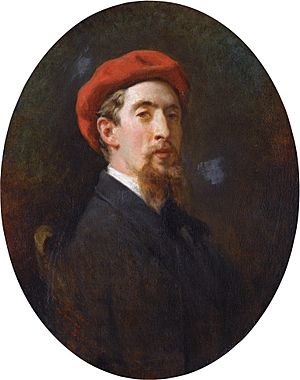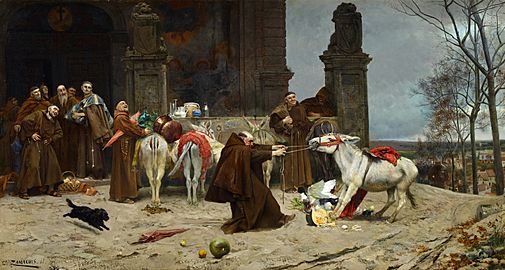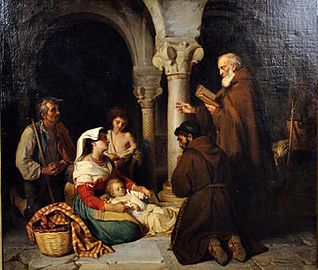Eduardo Zamacois y Zabala facts for kids
Quick facts for kids
Eduardo Zamacois y Zabala
|
|
|---|---|

His portrait by Raimundo de Madrazo (1863)
|
|
| Born |
Eduardo María Zamacois y Zabala
July 2, 1841 |
| Died | January 12, 1871 (aged 29) |
| Nationality | Spanish |
| Known for | painter |
| Style | Genre painting |
| Spouse(s) | Louise Marie Héloïse Perrin |
Eduardo Zamacois y Zabala (born July 2, 1841 – died January 12, 1871) was a talented Spanish painter. He was known for his detailed, smaller paintings. Eduardo came from a very artistic family. His father was a teacher, and his siblings and other relatives were writers, singers, and actors.
Contents
Biography
Early Life and Education
Eduardo María Zamacois y Zabala was born in Bilbao, Spain. His father, Miguel Antonio de Zamacois y Berreteaga, was a professor. He founded and directed a school called the Santiago de Vizcaya School of Humanities. Eduardo's family had many artists, including writers, actors, and musicians. Their family name came from a town in France called Hasparren.
Eduardo received a good education. He took drawing classes with a local artist named Joaquín Balaca. Later, his family moved to Madrid. In 1856, he joined the Real Academia de Bellas Artes de San Fernando. There, he studied art with a famous painter named Federico de Madrazo.
In 1860, Madrazo suggested that Eduardo go to Paris. He attended classes with Charles Gleyre to prepare for the Ècole des Beaux-Arts. However, he was not accepted there. So, he found a place in the workshops of Ernest Meissonier, another well-known artist.
Artistic Journey and Success
Eduardo was good at making business deals for his art. He worked hard to show his paintings in many European exhibitions. He quickly became successful. In 1861, he was asked to create paintings for the future king, Alfonso XII of Spain, at the Palacio Real de Madrid. This important work earned him a grant. The grant helped him continue his art studies.
In 1862 and 1864, he won medals at the National Exhibition of Fine Arts (Spain).
In 1865, Eduardo got married in Paris to Louise Marie Héloise Perrin. They met at the home of his friend, Jehan Georges Vibert. They had two children. Their son, Miguel Zamacoïs, became a famous journalist and writer. Their daughter, Marie Hélène, was born after Eduardo passed away. She later married a painter named Jean Alfred Marioton.
In 1866, Eduardo became good friends with the painter Marià Fortuny. Fortuny even made a portrait of him. During a trip to Rome, Eduardo also posed for Fortuny's painting, The Spanish Wedding. He helped Fortuny get a special contract with a big art company called Goupil & Cie. This was a very important moment in Fortuny's career.
In 1870, Eduardo won the Gold Medal at the Salon (Paris) for his painting, The Education of a Prince. One of his paintings was bought by the famous writer Charles Dickens after it was shown in London.
Later Life and Legacy
The Franco-Prussian War made things difficult in Europe. Because of this, Eduardo had to return to Madrid. He arrived there when King Amadeus I of Spain was officially crowned. Eduardo attended the ceremonies. It was a very cold winter, and he became ill the next day. He sadly died suddenly in Madrid at the age of 29.
After his death, he was still honored for his art. In 1878, he received a special diploma from the École des Beaux-Arts. A large show of his works was also held at the Exposition Universelle (1878). The Goupil & Cie company also published a big book with photographs of his most important paintings.
Other selected works
-
Jesters Playing, 1868, a game similar to Cochonnet
See also
 In Spanish: Eduardo Zamacois y Zabala para niños
In Spanish: Eduardo Zamacois y Zabala para niños






